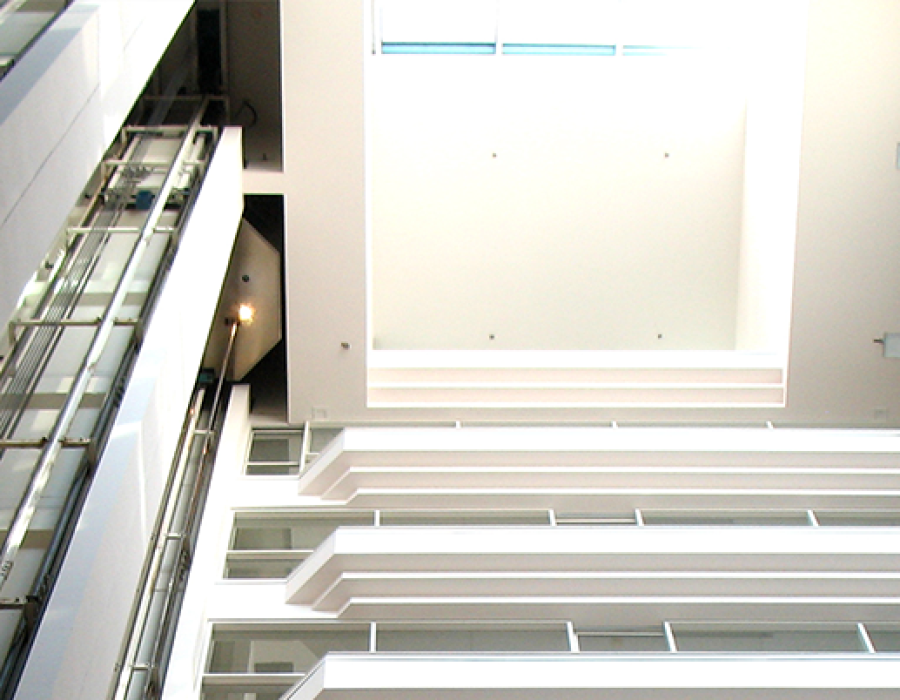Introduction to MRL Traction Elevators
Machine Room-Less (MRL) traction elevators have transformed the landscape of vertical transportation. Unlike traditional elevators that require a dedicated machine room, MRL traction elevators integrate critical components within the hoistway, optimizing space utilization. These elevators, offered by leading elevators manufacturers, combine efficiency, safety, and modern design, making them a popular choice for urban buildings where space is at a premium.
How MRL Traction Elevators Operate
MRL traction elevators use a traction system driven by a compact motor and counterweight mechanism. The motor, typically located at the top of the hoistway, employs steel ropes or belts to move the elevator car. Advanced control systems ensure smooth acceleration and deceleration, enhancing passenger comfort. By eliminating the need for a separate machine room, these elevators reduce construction costs and free up valuable floor space, making them ideal for mid-rise buildings.
Benefits of MRL Traction Elevators
The primary advantage of MRL traction elevators is their space-saving design. Elevators manufacturers have engineered these systems to fit into smaller hoistways, allowing architects to maximize usable space. Additionally, MRL elevators are energy-efficient, often incorporating regenerative drives that recycle energy during descent. Their gearless motors reduce wear and tear, resulting in lower maintenance costs and extended lifespan. These features make MRL traction elevators a cost-effective and sustainable solution.
Safety and Reliability Features
Safety is paramount in elevator design, and MRL traction elevators excel in this area. Modern systems include redundant safety mechanisms, such as overspeed governors, emergency brakes, and advanced monitoring systems. Elevators manufacturers prioritize compliance with stringent industry standards, ensuring passenger safety. The use of durable materials and precision engineering further enhances reliability, minimizing downtime and ensuring consistent performance in high-traffic environments.
Applications Across Building Types
MRL traction elevators are versatile and cater to a wide range of building types, including residential complexes, commercial offices, hotels, and healthcare facilities. Their compact design makes them suitable for retrofitting older buildings where space constraints limit traditional elevator installations. In new constructions, they enable architects to create innovative designs without sacrificing functionality. The quiet operation and smooth ride quality make them ideal for environments where occupant comfort is a priority.
Challenges in Implementation
Despite their advantages, MRL traction elevators present some challenges. The initial cost of installation can be higher due to advanced technology and specialized components. Elevators manufacturer must ensure proper integration with building structures, which requires precise planning. Maintenance, while less frequent, demands skilled technicians familiar with MRL systems. However, the long-term benefits of reduced energy consumption and space efficiency often justify the investment.
The Role of Elevators Manufacturers
Elevators manufacturers play a critical role in advancing MRL traction elevator technology. Through research and development, they introduce innovations such as smarter control systems, eco-friendly materials, and enhanced user interfaces. Customization options, such as aesthetic finishes and accessibility features, allow these elevators to meet diverse client needs. By collaborating with architects and builders, manufacturers ensure seamless integration of MRL elevators into modern building designs.
Future Trends in Elevator Technology
The future of MRL traction elevators is bright, with ongoing advancements aimed at improving efficiency and user experience. Emerging technologies, such as IoT-enabled monitoring and predictive maintenance, are set to enhance reliability. Elevators manufacturers are also exploring sustainable materials and energy-saving features to align with green building standards. As urbanization drives demand for vertical transportation, MRL traction elevators will remain a cornerstone of innovative building solutions.
Conclusion
MRL traction elevators, crafted by skilled elevators manufacturers, offer a blend of efficiency, safety, and space optimization. Their advanced technology and versatile applications make them indispensable in modern architecture. While challenges exist, the benefits of reduced energy use, lower maintenance, and enhanced design flexibility position MRL traction elevators as a leading choice for vertical mobility. As technology evolves, these elevators will continue to shape the future of urban transportation.





Comments